ACC IMF Beef Sampling Study
ACC conducted a study to determine the marbling of beef slices in various testing conditions.
ACC had 1500 carcasses graded by ALMTech expert graders and images recorded by a camera operator. These carcases had clearly marked carcass tickets per industry standard. Meat Research software can read and interpret industry standard barcodes by default. The sample number is registered to the study database by scanning the unique sample barcode created for the project and a carcass ticket assigned to the body. A sample is sliced off the same measurement site used for grading and placed into a plastic bag with the sample ticket from the carcase.
The samples collected in the bags were taken to another location for slicing, where ALMTech staff weigh the samples before slicing, cut the samples into smaller pieces to be placed in a test tube for testing, and weigh the samples again. The weights are recorded using a high precision scale that was plugged into a phone and entered into the Meat Research electronic form. The sample ticket from the slice bag and then the test tube barcodes created by Meat Research were scanned to create that three-part connection to the sample, the body and the tube.
The sample tubes were placed in boxes to be frozen and sent to Murdoch University for IMF testing. The boxes were labelled with unique Meat Research software barcodes, and the barcodes on the box and sample tubes were both scanned to connect them in the study database.
All the electronic forms and barcodes were created by Meat Research to facilitate the process ACC had designed for this study. Meat Research also collated data to allow greater clarity and ease of identification of body number to sample number through the use of the electronic forms and barcodes. Every sample collected by ACC can be traced back to the body number of the carcass, allowing researchers to find additional data about the carcass effortlessly.
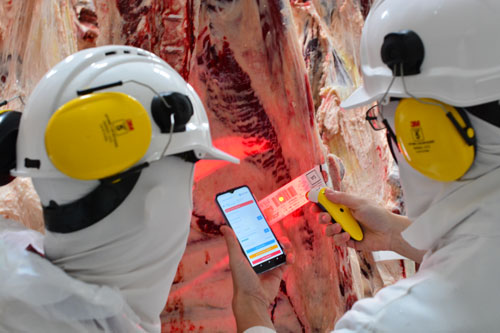
Scanning the industry standard carcass ticket
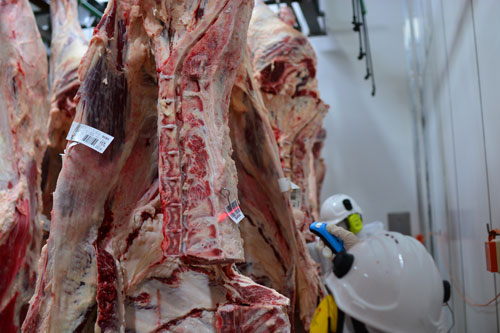
Scanning the Meat Research sample ticket
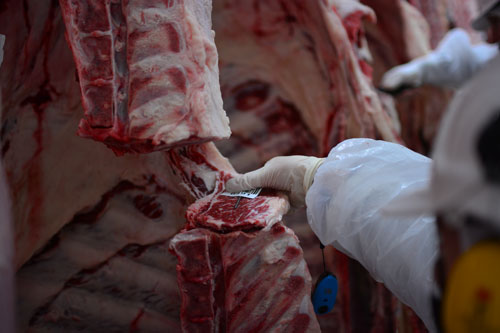
Removing the sample ticket and sample
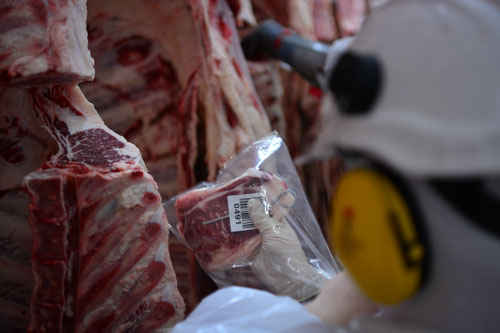
Placing the sample and ticket into the sample bag
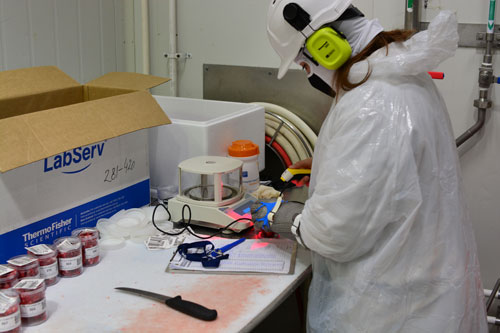
Scanning the sample ticket for slicing
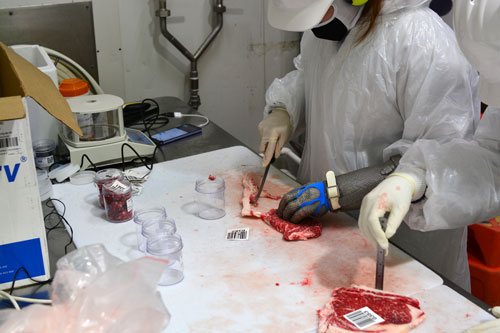
Slicing the samples
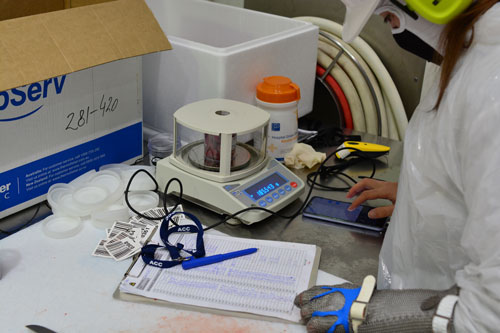
Inputting the weight into the Meat Research form
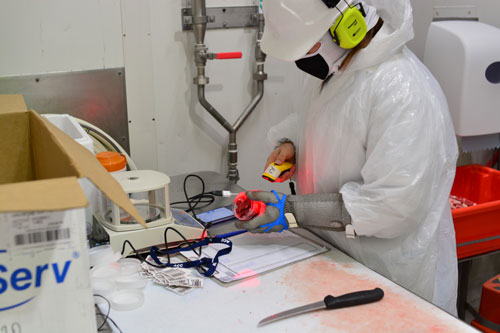
Scanning the sample tube barcode
ACC IMF Beef Sampling Study
ACC conducted a study to determine the marbling of beef slices in various testing conditions.
ACC had 1500 carcasses graded by ALMTech expert graders and images recorded by a camera operator. These carcases had clearly marked carcass tickets per industry standard. Meat Research software can read and interpret industry standard barcodes by default. The sample number is registered to the study database by scanning the unique sample barcode created for the project and a carcass ticket assigned to the body. A sample is sliced off the same measurement site used for grading and placed into a plastic bag with the sample ticket from the carcase.
The samples collected in the bags were taken to another location for slicing, where ALMTech staff weigh the samples before slicing, cut the samples into smaller pieces to be placed in a test tube for testing, and weigh the samples again. The weights are recorded using a high precision scale that was plugged into a phone and entered into the Meat Research electronic form. The sample ticket from the slice bag and then the test tube barcodes created by Meat Research were scanned to create that three-part connection to the sample, the body and the tube.
The sample tubes were placed in boxes to be frozen and sent to Murdoch University for IMF testing. The boxes were labelled with unique Meat Research software barcodes, and the barcodes on the box and sample tubes were both scanned to connect them in the study database.
All the electronic forms and barcodes were created by Meat Research to facilitate the process ACC had designed for this study. Meat Research also collated data to allow greater clarity and ease of identification of body number to sample number through the use of the electronic forms and barcodes. Every sample collected by ACC can be traced back to the body number of the carcass, allowing researchers to find additional data about the carcass effortlessly.

Scanning the industry standard carcass ticket

Scanning the Meat Research sample ticket

Removing the sample ticket and sample

Placing the sample and ticket into the sample bag

Scanning the sample ticket for slicing

Slicing the samples

Inputting the weight into the Meat Research form

Scanning the sample tube barcode